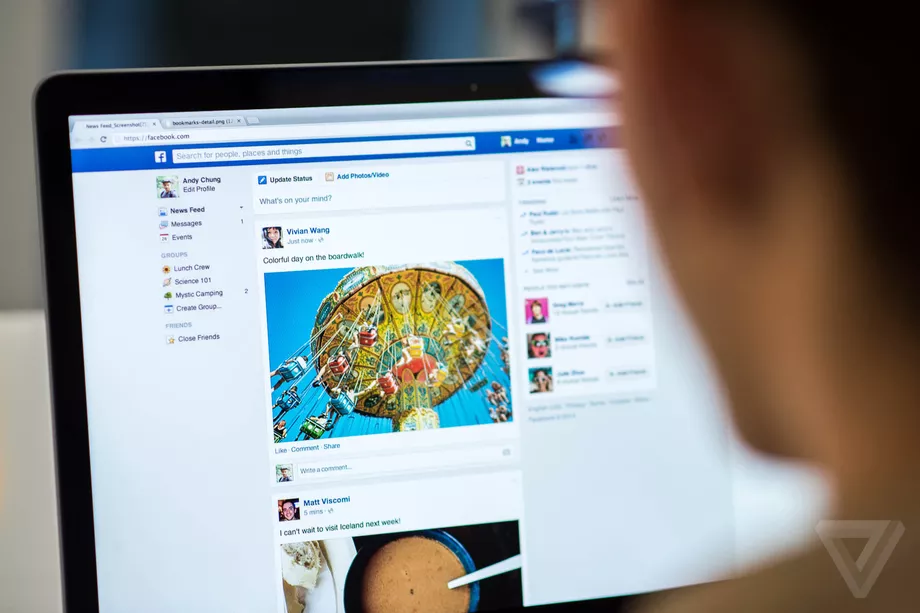
After the amount of fake news circulation online during the election last year, it’s no wonder online readers are looking to take matters into their own hands. When even major news outlets and respected journalists retweet and pass on fake news without double-checking, how are we supposed to trust what we read online?
Luckily, there are a lot of geeks like us out there to help improve their digital news reading habits. When you know how to spot propaganda in articles, besides from the regular political bias we find in most newspapers, and understand the procedure of validating the sources, you’ll suddenly be a responsible news consumer.
It makes quite a difference, after all, the next time someone claims that Pope Francis has endorsed President Trump.
Separating between journalism and fake news

Fake Or Real? How To Self-Check The News And Get The Facts
In a research project conducted by CJR, the researchers found that digital news consumers see fake news and journalism as one of degree – rather than drawing a clear distinction. Fake news was indeed associated with circulations online and social media, but they also saw journalists and politicians as purveyors of the false stories.
The focus group would usually point to poor journalism, the trend of sensationalism, political propaganda as well as forms of advertising – instead of seeing fake ones as a separate genre. While they did recognize it to be false information masqueraded as true news as well, it was not a category they used as much as the former. Let’s take a closer look at the differences.
Clickbait and fake news: What’s the difference?

Facebook is determined to completely kill clickbait
Fake news can be clickbaits but that doesn’t mean that the articles using headlines to lure readers always contain fake news. These can still contain fake news, though, and their headlines certainly seem to be leading us onto the wrong track.
‘You have to read this!’ Or what about the classic ‘secret diets doctors don’t want you to know about!’ It’s clear as day, to most Internet-savvy people, that these articles are fishing for clicks.
It doesn’t mean that they’ll be circulating fake news about politics but the two of these tend to go hand-in-hand. While propaganda is certainly nothing new, the biased stories were usually spread for political gain; think British propaganda during WWI to motivate the public to stand up against Germany.
Today, on the other hand, we see a new trend in terms of fake news and propaganda with a small number of people circulating the twisted stories to make a profit through, of course, clickbaits and advertising.
Social media unlocked the secret for fake news distributors to gain access to an audience as well as avoiding the costs of distribution. It’s a fake news-haven for social scams and fabricated content, and we’re here to help you take control of it.
Wait a minute, this article looks sketchy: What now?
If you’re reading something that seems unlikely, even if it’s been circulated by a trusted journalist, the first thing you should do is to check the source. It appears to be easy enough, right? Ask yourself who wrote the piece, what motivation they may have had for writing it, as well as what they may have chosen to leave out.
Train yourself with articles from established news sources first, such as The New York Times and understand their political bias. They’re known as one of the most liberal news sources while Fox leans to the right; what would a liberal newspaper include about a political story which a conservative paper would exclude? Notice the kind of language each of the papers will use to describe policy-making and weigh them out against each other.
If it sounds time-consuming, it’s because it often is. With a bit of training and understanding of the different news outlets, on the other hand, you’ll be able to spot political bias in a matter of second. And that brings us into the bizarre world of fake news on social media.
The art of URL, formatting, and proof
Propaganda may be old news but fake ones are certainly not. As citizens, it’s our responsibility to stop the wildfire from spreading by arming ourselves with knowledge and a healthy dose of scepticism. When you see a sensational news story circulating on social media which keeps being shared and liked, it’s time to get down to business.
Besides from the obvious clickbait headlines, you can have a look at the URL of the site. Is it particularly long and intricate? A trusted and respected news site would go out of their way to have a proper URL as it immediately makes them look more professional and thereby credible.
They may mimic authentic news sources, though, as a clever way to fool you into believing they’re someone else; look for small changes in the URL and compare it to the actual site. Next, scrutinize the format of the article as fake news sites lack the kind of skills professional journalists have in terms of proper grammar, inverted-pyramid formats, and other random mistakes within the article.
If you still believe that everything checks out, it seems true enough, and an ISIS leader has definitely asked Muslim women to vote for Hillary Clinton, it’s time to hit the search engine again. Look for other trusted news sources and see if they’re talking about it too; something sensational would definitely be covered by the BBC and the New York Times.
And remember the emotion

How To Avoid Falling For Lies And Fake News
The tips above makes it a bit easier to spot news that are less than true without much hassle. There is another way too, though, but it’s not as straight-forward as the steps above. While reading news shared on social media, remember that journalists strive to deliver the facts; fake news and clickbaits want emotion.
Ask yourself how you feel after reading the article. Was it a clean-written piece, laying out the most important details in a factual and preferably non-biased way? While it’s true that some newspapers fail to do this and most of us can list at least three established news sources out there that feed of sensationalism, fake news articles lack a balanced point of view.
The better we, as news consumers, are at recognizing a circus when we see one, the less it will circulate online. It makes it easier to keep fake stories away from those who are easily influenced – and it even makes it less likely that they wind up in some irresponsible journalist’s news feed.
Facebook launched a new tool recently that makes it a bit easier for social media users to spot something fake in their feed, by the way, with a prompt appearing at the top of the user’s feed called ‘how to spot fake news.’ It has a lot of the tips mentioned in this article, by the way, so all credit to them, and it’s a clear indication that social media is vamping up their war on fake news.
They may not stand shoulder-to-shoulder with Trump while doing so, but at least it will be a bit easier for us to tell the difference between fabricated content and – well, everything he labels as fake’





